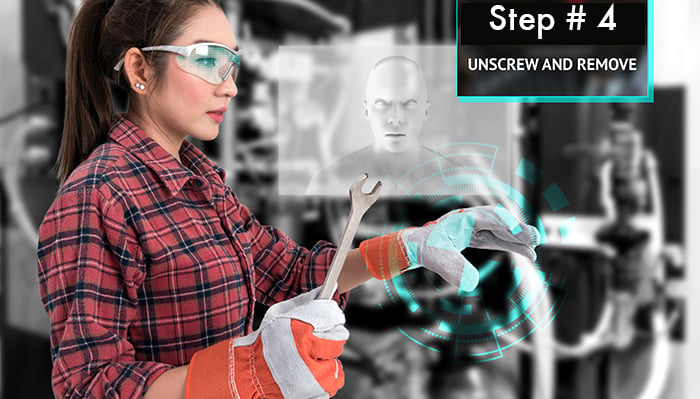Are companies adopting AR for field service?
Aug 20, 2018 • Features • Management • AR • Augmented Reality • Connected products • Predictive maintenance • Digital Twins • field service • field service management • Service Delivery • Service Management • Si2 partners • Titos Anastassacos • Managing the Mobile Workforce
Titos Anastassacos from Si2Partners shares with us some interesting insight on Augmented Reality from their recent research-based reports...
Technology is changing field service rapidly.
In the not too distant future Smart Connected Products will be self-diagnosing; Maintenance will become, almost exclusively, predictive; Spare parts will be 3D printed; And humans will interact at a deeper level with machines through Augmented Reality and Digital Twins, whether the machine is in the same room or on the other side of the planet.
The nature of the service business will shift from technical labour and logistics to knowledge management and exchange. Service delivery will change drastically as will the nature of competition and business models.
"The nature of the service business will shift from technical labour and logistics to knowledge management and exchange. Service delivery will change drastically as will the nature of competition and business models..."
But if the “end-state” medium term can be discerned quite clearly, getting there poses significant challenges.
So, at a Si2 Partners, we developed a series of survey-based management reports, to shine a spotlight into service businesses’ efforts to grasp the opportunities of digitization while dealing with the challenges. We then draw conclusions and recommend the best ways forward. The first report on Augmented Reality is available now, the next report on Predictive Maintenance is due by the end of the year.
The first public demonstration of AR was in 1998 during ESPN’s coverage of a football game: Generation and display of the yellow first down line. The line stayed fixed within the coordinates of the playing field. It was not physically present on the field and was visible only to the television audience.
But from that simple application, only 15 years later, Gartner was predicting that companies would be increasing their profits by over $1 billion annually -by 2017- through the application of AR in their field service business.
Things, of course, are not so simple. Reducing costs does not directly translate into increased profits.
That depends on prices and we know that digitization tends to make them drop, sometimes to zero -think of what happened to chemical photography. But even if we only consider costs, AR is clearly important, in many ways transformational, technology with a potentially very powerful impact.
So, are companies adopting AR for field service? Our survey showed that they are.
Most expect significant cost savings and productivity improvements through AR, mainly in engineering time and travel cost -and, interestingly, smaller companies are at least as much engaged with the technology as larger ones: Upfront investment can be low, and it can be implemented quickly and stand-alone (at least initially).
Importantly, it may help reduce pressure on scarce, highly qualified, and expensive engineering resources, while simultaneously improving the cost-effective support of remote customers (smaller companies are less likely to have extensive service networks).
Overall, we found that while less than 1/3 of respondents already used AR, and, of those, the majority had introduced it over the past 12 months, another third planned to introduce it over the coming 12 months. This indicates an accelerating trend.
Of course, for users, it has not been all smooth sailing. Challenges are numerous: For example, it turns out that connectivity at customer sites is a significant issue, which hampers the use of the technology. But technical problems are normal at this stage of introduction.
Far more important are managerial challenges.
For example, as always, one size does not fit all: The most commonly reported use case is field technicians receiving AR-based support by experienced engineers from a remote central hub.
"Better applications for such cases may be pooling AR-based support, providing technical information through “knowledge-libraries”..."
This may help companies with large field service workforces (possibly with high turn-over rates or fewer qualifications) supporting standardized equipment. It is not much help to vendors of highly complex equipment whose field engineers are already highly experienced and qualified themselves.
In fact, it may be even counter-productive, slowing things down or reducing acceptance.
Better applications for such cases may be pooling AR-based support, providing technical information through “knowledge-libraries”, particularly on rarely encountered problems or legacy equipment, or integrating AR with the IoT, so that operational data can provide real-time context to engineers and support for diagnostics.
However, such applications require investment in digital content, something that many AR users have often not considered, as well as a process of experimentation and development.
Another finding is that following implementation of AR, many managements don’t take the necessary action to lock-in the AR benefits by pushing through change in the support and field service processes. For example, few companies eliminate technical manuals and drawings from a field engineer’s toolbox, delaying the necessary adjustments.
And, while many companies market their AR capability to customers, few have developed AR-based offerings. Yet our survey shows that customers would welcome AR-based support if it would help to reduce costs and improve performance, notwithstanding issues of confidentiality or privacy.
The process to integrate AR into a company’s mode of operations and to maximize its benefits will, as for any new technology, be arduous and bumpy. But the impact on costs and productivity is becoming clear. Though most don’t yet formally track it, 72% of our respondents said that AR is on par with or has exceeded expectations.
Augmented Reality in Service: Ready for Prime Time? Visit the Service in Industry Hub Shop to download the flyer or purchase the report. For more information contact titos.anastassacos@si2partners.com or visit Si2Partners
Be social and share





















 Field Service News is published by 1927 Media Ltd, an independent publisher whose sole focus is on the field service sector. As such our entire resources are focused on helping drive the field service sector forwards and aiming to best serve our industry through honest, incisive and innovative media coverage of the global field service sector.
Field Service News is published by 1927 Media Ltd, an independent publisher whose sole focus is on the field service sector. As such our entire resources are focused on helping drive the field service sector forwards and aiming to best serve our industry through honest, incisive and innovative media coverage of the global field service sector.
Leave a Reply